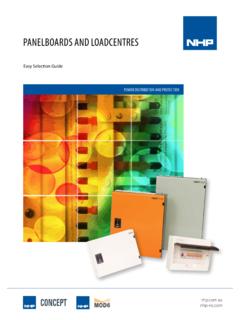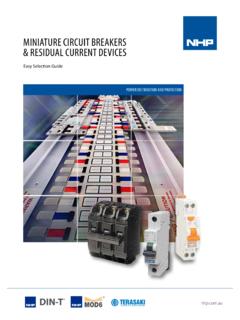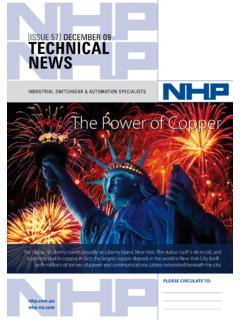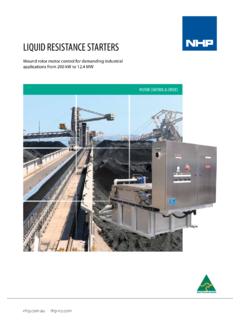Transcription of Harmonic Filtering - nhp.com.au
1 Harmonic Filtering POWER QUALITYC ompact, fast response Harmonic mitigation 1300 NHP NHP 0800 NHP NHP Electrical Engineering Products Pty LtdNHP Electrical Engineering Products (NHP) specialises in motor control, power distribution and automation offers the Australasian market the complete industrial electrical and automation solutions package. As authorised distributors for Rockwell Automation and their Allen-Bradley products in our designated areas of Australia and throughout all of New Zealand, NHP is partnered with the leading global provider of industrial automation solutions and switchgear components. An Australian owned company, NHP is committed to serving the Australasian industry with quality products and customer support. This is achieved through an 900+ strong team which is distributed across 25 branches and 24 regional locations throughout Australia and New Zealand.
2 While NHP stock an impressive 70,000+ line items, we are much more than a component supplier. NHP source the highest quality products from leading global suppliers, and customise these into solutions for the local Australian and New Zealand markets, providing a complete fit to purpose systems and solutions NHP we have a strong customer focus and we look to provide the right product and product solutions for our customers requirements and applications, all at a competitive price. We value and care for our customers and support them by offering personalised service and assistance to meet their every need and demand. Our customers can have 100% confidence in our ability to support them when, where and how it is needed. Put simply, NHP is easy to do business with .NHP Electrical Engineering ProductsNHP NATIONAL MANUFACTURING AND DISTRIBUTION CENTRE[3]What are harmonics?
3 4 Problems Caused by Harmonics 5 Harmonic Resonance 5 Harmonic Standard Compliance 6 IEEE STD 519-1992 6 AS/NZS :2001 Standard 6 Displacement & Total Power Factor 7 Harmonic Mitigation solutions 8 Passive Harmonic Filtering 8 Active Harmonic Filtering 8 Hybrid Harmonic Filtering 8 Harmonics Filtering Application Example - VSDs 9 ECOsineTM Passive Harmonic Filters 10 Passive Harmonic Filter Application 11 ECOsineTM Passive Harmonic Filter Selection Table 12 Part number coding 12 External filter elements 13 Monitoring Status 13 ECOsineTM Active
4 Harmonic Filters 14 ECOsineTM AHF Parallel Operation 15 Part number coding 18 Recommended External AC mains protection 18 ECOsineTM Active Technical Specification 19 Table of ContentsScan the QR code to download the softcopy of this brochure.[4]What are harmonics?The term harmonics refers to the voltage and current Harmonic distortion within an AC circuit. Any waveform which is not sinusoidal (complex) can be shown to contain sinusoidal waveforms of integer multiples of the fundamental. In a 50 Hz electrical system, 250 Hz is the 5th Harmonic , 350 Hz is the 7th Harmonic 1. Fundamental frequency, harmonics and the sum of harmonics and fundamentalAn electrical system supplies power to loads by delivering current at the fundamental frequency. Only fundamental frequency current can provide real power.
5 Current delivered at Harmonic frequencies do not deliver any real power to the percentage of harmonics in a waveform is called THD (total Harmonic distortion) and can be further broken up into THVD (total Harmonic voltage distortion) and THID (total Harmonic current distortion). As the THVD and THID increases, the efficiency of the system is greatly currents create Harmonic voltages and it is the Harmonic voltages that cause the problems with other equipment that are connected to the same secondary of the transformer where the Harmonic are created by the increased use of non-linear devices such as UPS systems, solid state variable speed motor drives, rectifiers, welders, arc furnaces, fluorescent ballasts, and personal computers. The current drawn by these devices is not proportional to the supplied voltage, and so, such loads are referred to as non-linear = X 100I Harmonic I fundamentalFundamental frequencySum Harmonic frequenciesSum total fundamental plus harmonics[5]Problems Caused by HarmonicsHigh voltage distortion, current distortion and high neutral-to-ground voltage caused by harmonics can result in equipment failure, production down time and costly repairs to the electrical distribution is critical that the consumer is aware of the costly problems and hazards associated with high levels of harmonics especially given the dramatic increase in use of non linear devices.
6 These harmonics can greatly impact the electrical distribution network along with all facilities and equipment that are problems associated with harmonics include: Large load currents in the neutral wires of a 3 phase system. This can cause overheating of the neutral wires, which can result in a potential fire hazard. Interference in telecommunications systems and equipment Erratic operation of control and protection relays Tripping of circuit breakers and other protective devices Failure or malfunction of computers, motor drives, lighting circuits and other sensitive loads Overheating of standard electrical supply transformers resulting in costly down time and repairs or replacement of transformer. Poor power factor. Resonance which produces over-current ResonanceResonance occurs when the system reactances ( capacitive and inductive reactance) are equal.
7 Excessive currents will result if the resulting resonant frequency corresponds to the frequency on which electrical energy is present and this will cause serious problems as mentioned indicators of resonance include overheating, frequent circuit breaker tripping, irregular fuse operation, capacitor failure, electronic equipment malfunction, flicking lights and telephone interference.[6] Harmonic Standard CompliancePower utility companies and Australian Standards stipulate maximum Harmonic levels which apply at a customer s PCC (point of common coupling). Generally, the maximum permissible Harmonic levels are given in terms of % THVD however to achieve a reduction in THVD, the customer is required to reduce their THID through the use of Harmonic mitigation equipment. Commonly, THVD levels are required to be between 5-8%, however this will vary from state to state.
8 IEEE STD 519 (1992) and AS/NZS (2001) are two widely used Harmonic limit standards, however other standards may also be relevant including AS/NZS 2007. Please confirm Harmonic requirements with your uitility provider. For more information on the following tables please refer to the relevant Current Distortion Limits for General Distribution Systems (120 V Through 69 000 V)Table 1 Compatibility levels for Harmonic voltages (in percent of the nominal voltage) in LV and MV power STD 519-1992AS/NZS :2001 StandardOdd Harmonics non multiple of 3 Odd Harmonics non multiple of 3 Even HarmonicsOrder h Harmonic voltage % Order h Harmonic voltage % Order hHarmonic voltage %57111317192325>25 + (25/h)391521>21 24681012>12 : Total Harmonic distortion (THD) 8 %Maximum Harmonic Current Distortion in Percent of ILIndividual Harmonic Order (Odd Harmonics)ISC / IL <11 11 h<17 17 h<23 23 h<3535 h TDD<20* <50 <100 <1000 >1000 harmonics are limited to 25% of the odd Harmonic limits aboveCurrent distortions that result in a dc offset, , half-wave converters, are not allowed*All power generation equipment is limited to these values of current distortion, regardless of actual ISC / ILwhereISC = maximum short-circuit current at PCC IL = maximum demand load current (fundamental frequency component) at PCC.
9 [7]Displacement & Total Power FactorThe benefits of Harmonic Filtering are not limited to preventing equipment failure and conforming to required industry standards, but it can also improves your total power (or true) power factor includes both displacement power factor and distortion power factor and can be defined as:The Green Star AdvantageDid you know you can now take full advantage of the Green Star Initiative when applying Harmonic mitigation? The Green Star initiative rewards businesses for improved power and energy use and through Harmonic mitigation businesses will actively reduce peak energy demand. This benefit complies to the Green Star Ene-5 Peak Energy Demand Reduction opportunity and since harmonics inherently draw unwanted currents, Harmonic mitigation means peak energy demand reduction can be achieved.
10 Also relevant is the fact that Harmonic mitigation will improve your total power factor (as detailed further below), which results in reducing wasted work . For more information on NHP s Green Star Solution please contact your local NHP 2. NHP PFC functional traywhere: PF = power factor THDI = total Harmonic distortion current cos j = PF = cos j11 + THDI2 Real Power Apparent PowerReferring to the relationship above, by mitigating harmonics, THDI decreases and hence total PF improves. With improved power factor, inductive reactive power, (and by result current draw), from the supply decreases and additional savings in the form of reduced tariffs may be important consideration is the harmful effects harmonics can have on capacitors, which may be present in the load or where power factor correction (PFC) systems are utilized.
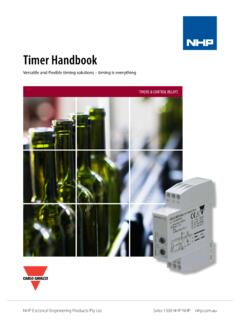
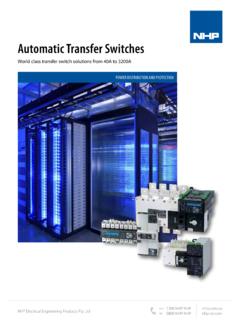
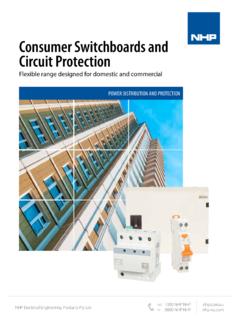
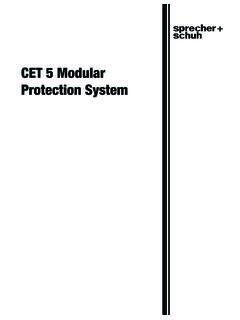
![[CATALOGUE TB2-CAT] TEMBREAK 2 MOULDED …](/cache/preview/6/3/1/3/d/b/b/2/thumb-6313dbb2a06c3f72e0063d5e815c6636.jpg)
